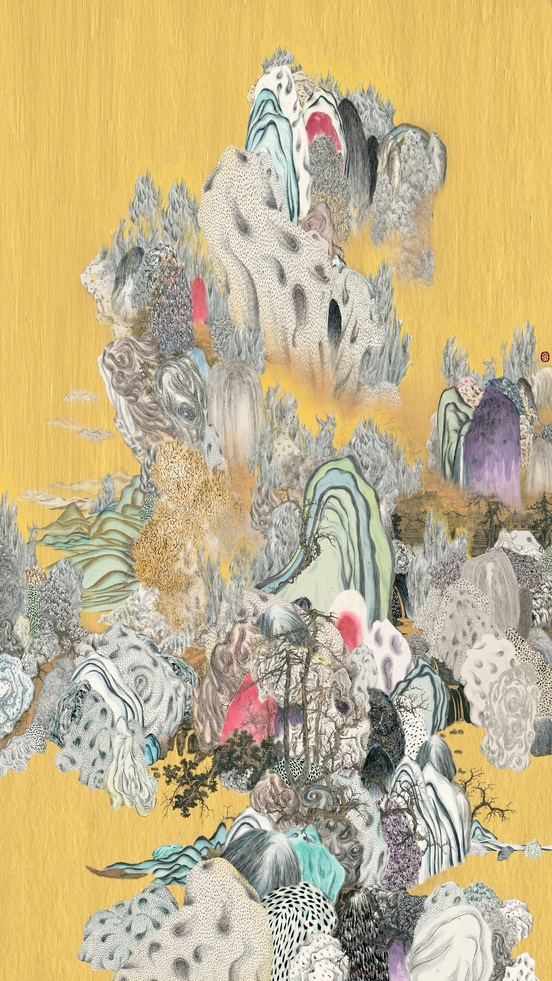2011年開始構思《類山水PS.早春圖》動態影像,是「類山水PS.古畫系列」的第一件作品,以電腦編輯(Photoshop)手法,將袁氏皴法的女性情緒團塊、話語轉喻,覆蓋反轉古典陽性山水意識,也是對於古畫皴結構背後隱藏的政治主體象徵,加以顛覆與換置。
另以自創的《PS. THEY》系列動態影像,運用自古已有的模件化生產方式,以袁氏皴法多樣性皴塊符號,取代古典皴結構的單一性與辨識系統。情緒性的「類山水THEY Shanshui」皴塊熱鬧紛雜、眾聲雜遝,如同我們所處的多元世界。
The video “Displacing Guo Xi's Early Spring in THEY Shanshui” was first conceptualized in 2011. It is the inaugural work in the THEY Shanshui PS. Ancient Paintings Series. Using computer editing techniques(Photoshop), this piece overlays and inverts classical masculine landscape motifs with emotional clusters and metaphorical discourse derived from Yuan’s cun(皴) texturizing technique. It also subverts and replaces the political symbolism concealed behind the structural composition of ancient paintings.
Additionally, the original “PS. THEY” series of videos employs traditional modular production methods that have been around since ancient times. By adopting the diverse cun symbols of Yuan’s cun method, it replaces the singularity and identification system of classical cun structures. The emotional “THEY Shanshui” features a bustling and noisy collection of cun clusters, reflecting the diverse and complex world we live in.

袁慧莉自創《類山水》「袁氏皴法」,以動態影像編輯覆蓋宋代郭熙《早春圖》裡的山石,將自創的情緒性皴法取代古典的自然性皴法,不僅以女性意識顛覆古典中國男性山水畫家建構的皴法語彙,也將「外師造化、中得心源」的美學觀,轉向純然「內在性抽象」的詮釋觀點,重塑山水畫的主體政治語境,展現與古迥異的新境界。
Yuan Hui-li has created "THEY Shanshui" using her "Manual of Yuan's Texturizing Strokes" In this animation artwork, she overlays the mountains and rocks in Guo Xi's painting "Early Spring" from the Song Dynasty, replacing the classical natural texture strokes with her own emotionally charged ones. Not only does she subvert the texture strokes constructed by classical male Chinese landscape painters, through her female consciousness, but she also shifts the aesthetic perspective from the traditional "learning from nature, finding inspiration within" viewpoint to a pure “internal abstraction" interpretation. This reinterpretation reshapes the political context of landscape painting and reveals a new and distinct realm that differs from the classical tradition.
